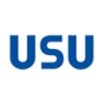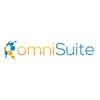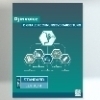Software Tips
IT Service Management (ITSM)
IT service management generally comprises a set of procedures, measures and methods for the development, provision and management of IT services for the company, its employees or its customers. IT service management includes all processes related to planning, compilation of hardware and software, delivery and support. IT services can include virtually any IT resource (hardware, software, computing resource). ITSM is therefore a very general term.
Norms, frameworks and standards for ITSM
There are various norms, frameworks and standards for IT service management, such as ISO/IEC 20000, the Business Process Framework, COBIT or ITIL for ITSM.
ISO/IEC 20000
The international standard ISO/IEC 20000 on IT service management specifies the minimum requirements for processes that an organization must establish in order to provide and manage a defined quality for IT services.
The following requirements and processes are defined by ISO/IEC 20000:
- Requirements for the management system
- Planning and implementation of service management
- Plan and implement new or changed services
- Service level management
- Service reporting
- Availability and service continuity management
- Financial planning and cost accounting for IT services
- Capacity management
- Information security management
- Business relationship management
- Supplier management
- Incident management
- Problem management
- Configuration management
- Change management
- Release and deployment management
Business Process Framework eTOM
The Business Process Framework eTOM forms a framework for business processes of companies and service providers in the telecommunications industry. It is published by TM Forum as a consortium of telecommunication providers. eTOM has a data model for each detailed process.
COBIT
COBIT (Control Objectives for Information and Related Technology) is a framework for IT governance. The framework divides the tasks of IT into processes and control objectives. Among other things, COBIT is used as a model for ensuring compliance with legal requirements.
ITIL
ITIL is the abbreviation of Information Technology Infrastructure Library. It was developed in the early 1980s and has been a registered trademark of AXELOS Ltd, a joint venture of Capita Plc and the Cabinet Office of the British government, since 2014.
ITIL is, in a sense, the standard for ITSM. In ITIL 4, 34 best practices are described. This version ITIL 4 was published in 2019. Also widely used are the 5 ITIL disciplines and 26 ITIL version 3 processes. While ITIL V3 defined the service lifecycle and the corresponding processes, ITIL 4 focuses on principles, concepts and practices. The goal of an organization is to achieve the highest possible service quality in the IT area by means of ITIL. Among other things, ITIL provides a common terminology for IT service management.
The best practices are divided into general management practices, service management practices and technical management practices.
ITSM Software
The ITSM software supports IT teams of companies and organizations as well as managed service providers in the planning, design, development and monitoring as well as the continuous provision of IT services. The ITSM processes that ITSM tools map include software release and deployment management, incident management, change management, knowledge management and problem management. ITSM software can be used to manage internal IT and users as well as external IT and users.
Advantages of ITSM Software
The benefits of using ITSM software lie both in improving the efficiency of operational processes and in enhancing customer service. By means of ITSM software, numerous IT processes can be standardized. A regulated IT environment with appropriate policies not only protects against internal and external threats, but also ensures optimal utilization of IT resources.
Improving customer service is achieved through effective use of IT service management software. Customer or user problems can be better tracked by using proven and standardized procedures. As a rule, solutions to problems are found more quickly by means of an ITSM tool.
With the use of ITSM software, modules for vulnerability analysis, predictive analysis and for problem management are usually also available. These modules can help prevent incidents and thus reduce downtime. Using ITSM software, problems can be identified at an early stage and any downtime can be prevented. In addition, emergency plans can be created and implemented.
Tips and question suggestions
More tips and question suggestions for evaluating ITSM software:
- Ask the vendor if the ITSM software supports a powerful IT service desk. The IT service desk is the interface between IT service providers and users.
- Check whether the ITSM software maps all areas (ITIL best practices, frameworks, etc.) that you currently use or plan to use in the future. Look at the functions and modules that the software includes as standard. For example, is a self-service portal also included?
- Ask the vendor about integration with existing systems. The ITSM software should monitor hardware, software and networks and exchange data with connected applications. Make sure that the selected software can access all existing IT assets. Is the integration of all necessary third-party systems guaranteed and are standard interfaces available?
- When selecting an ITSM software, make sure that it is equipped with graphical dashboards and configurable reports. Service delivery and quality should be monitored in real time and based on key KPIs.
- Create specific scenarios that should be handled by the ITSM software and have the providors show you how they are mapped by the tools of the different providers.
- What best practices does the ITSM software include? Are these best practices continuously improved or adapted to customer requirements? Pay attention to the process flows and the functions!
- What about the usability of the ITSM software? Is the tool easy and simple to use and can the software be learned quickly? Is the GUI designed intuitively and in a way that is specific to the target group?
- Ask the provider about customizing options. Can the software be extensively adapted to your business processes? Is it easily configurable?
- Inquire about the operating expenses for installing updates or function upgrades! The costs for updates and upgrades often differ greatly between the individual providers of ITSM software.
- Ask the vendor about support and services! Does the vendor have ITIL® and project management certified consultants on hand to implement the software? Does the vendor offer training programs for the software?
- Consider whether the ITSM software is to be deployed on premises or cloud-based. Does the provider offer the required operating model and does the technology fit the defined IT standards in your company?
- Ask the vendor about reporting! Does the ITSM software offer preconfigured reports? Can company-specific reports be added? Does the software include interactive evaluations?
- Does the software or the manufacturer of the software offer the user interface, documentation and support in different languages? Are the languages you require included?
- Check the vendor's standing in the market! Has the software been on the market for a long time? For example, are there case studies or references with successfully implemented ITSM software?
 A digital company's daily routine is very dependent on good and trouble-free software. Randomness has no place in achieving the business goals and generating success. With the SPiCE-Lite Assessment Tool, however, it is easy to quickly recognise and evaluate all important information and, if necessary, take countermeasures in case of problems. This tool enables you to fully analyse and assess all software development processes or even your internal IT service management. . The SPiCE-Lite Assessment software tool comes into play exactly where time and other resources are often lacking in everyday life ...
A digital company's daily routine is very dependent on good and trouble-free software. Randomness has no place in achieving the business goals and generating success. With the SPiCE-Lite Assessment Tool, however, it is easy to quickly recognise and evaluate all important information and, if necessary, take countermeasures in case of problems. This tool enables you to fully analyse and assess all software development processes or even your internal IT service management. . The SPiCE-Lite Assessment software tool comes into play exactly where time and other resources are often lacking in everyday life ... EcholoN customers receive a comprehensive overview of their IT processes and infrastructure and are able to transparently display and control costs. The modular, highly integrated EcholoN covers all disciplines of ITIL-compliant IT service management. It focuses on the central topics: service design, service transition, service operation, continuous service improvement...
EcholoN customers receive a comprehensive overview of their IT processes and infrastructure and are able to transparently display and control costs. The modular, highly integrated EcholoN covers all disciplines of ITIL-compliant IT service management. It focuses on the central topics: service design, service transition, service operation, continuous service improvement... The USU IT & Enterprise Service Management product suite has a modular design and can map, control and optimise all of a company's service processes. It can be used in the IT area of large and medium-sized companies as well as by IT service providers or, for example, in the HR area or facility management.
The USU IT & Enterprise Service Management product suite has a modular design and can map, control and optimise all of a company's service processes. It can be used in the IT area of large and medium-sized companies as well as by IT service providers or, for example, in the HR area or facility management. omniSuite is a comprehensive solution platform for the step-by-step and completely flexible implementation of individual solutions in IT service management (ITSM), process management and business service management. rimacon omniSuite sets completely new standards: thanks to its unique flexibility, you can fully implement your requirements. You precisely map your individual IT environment, define the appropriate processes, map the IT services to the business services and receive exactly the information you need via analyses or reports.
omniSuite is a comprehensive solution platform for the step-by-step and completely flexible implementation of individual solutions in IT service management (ITSM), process management and business service management. rimacon omniSuite sets completely new standards: thanks to its unique flexibility, you can fully implement your requirements. You precisely map your individual IT environment, define the appropriate processes, map the IT services to the business services and receive exactly the information you need via analyses or reports. QSEC is an integrated management system that provides the management with decisions based on transparency and facts and supplies the corporate risk management with important decision basics from the operative risk management. The implementation of. the Compliance, of Information Security Management according to the requirements of ISO 27001, BSI standard (IT-Grundschutz), B3S Risk Management anddata protection according to GDPR Data Protection according to GDPR In addition, a wide range of other requirements ...
QSEC is an integrated management system that provides the management with decisions based on transparency and facts and supplies the corporate risk management with important decision basics from the operative risk management. The implementation of. the Compliance, of Information Security Management according to the requirements of ISO 27001, BSI standard (IT-Grundschutz), B3S Risk Management anddata protection according to GDPR Data Protection according to GDPR In addition, a wide range of other requirements ... MR.KNOW - SERVICEPORTAL The service portal for service services. Overview: End-to-end self-service portals, Customized workflows with BPMN 2.0 models, Service tree and service catalog, Easy maintenance of services, Digital wizards for processing, Automated service processes, Form replacements, Task lists and personal area, Individual interfaces per service or department, Reports, dashboards and process paths, Service portal with BPM software, Can be combined with other process templates MR.KNOW - BPM is a modular system ...
MR.KNOW - SERVICEPORTAL The service portal for service services. Overview: End-to-end self-service portals, Customized workflows with BPMN 2.0 models, Service tree and service catalog, Easy maintenance of services, Digital wizards for processing, Automated service processes, Form replacements, Task lists and personal area, Individual interfaces per service or department, Reports, dashboards and process paths, Service portal with BPM software, Can be combined with other process templates MR.KNOW - BPM is a modular system ... SERVICE ASSISTANT (MR.KNOW) is the perfect assistant for service centers, call centers and IT services. Relieve your service employees. Link processes, data and systems. Mr. KNOW takes over the fully automated processing of inquiries and complaints.
SERVICE ASSISTANT (MR.KNOW) is the perfect assistant for service centers, call centers and IT services. Relieve your service employees. Link processes, data and systems. Mr. KNOW takes over the fully automated processing of inquiries and complaints. Asset.Desk, combined with HEINZELMANN Service.Desk, seamlessly integrates powerful IT asset management with effective IT service management.
Asset.Desk, combined with HEINZELMANN Service.Desk, seamlessly integrates powerful IT asset management with effective IT service management. The ITSM Process Library offers a process- and practice-oriented solution with which all standards important for your company with all their specifications can be adopted in your own IT landscape. The included standard process model is based on the specifications of ISO 20000 and ITIL®. Using the ITSM process library, these standards can be adapted exactly to your company and integrated into your internal company process model. Probably the greatest advantage of this is the simple way in which it can be implemented, as well as the enormous amount of time it saves, especially in the initial phase of an ITSM project ...
The ITSM Process Library offers a process- and practice-oriented solution with which all standards important for your company with all their specifications can be adopted in your own IT landscape. The included standard process model is based on the specifications of ISO 20000 and ITIL®. Using the ITSM process library, these standards can be adapted exactly to your company and integrated into your internal company process model. Probably the greatest advantage of this is the simple way in which it can be implemented, as well as the enormous amount of time it saves, especially in the initial phase of an ITSM project ... The software solution links digital invoice processing with contract and asset management. Process any digital invoices in a structured format. In addition, the software provides information on where your PCs, laptops, printers and mobile devices are used with just a few clicks. With the help of automated invoice processing and cost accounting, hardware as well as your own IT service costs can be recorded and posted according to their source.
The software solution links digital invoice processing with contract and asset management. Process any digital invoices in a structured format. In addition, the software provides information on where your PCs, laptops, printers and mobile devices are used with just a few clicks. With the help of automated invoice processing and cost accounting, hardware as well as your own IT service costs can be recorded and posted according to their source.